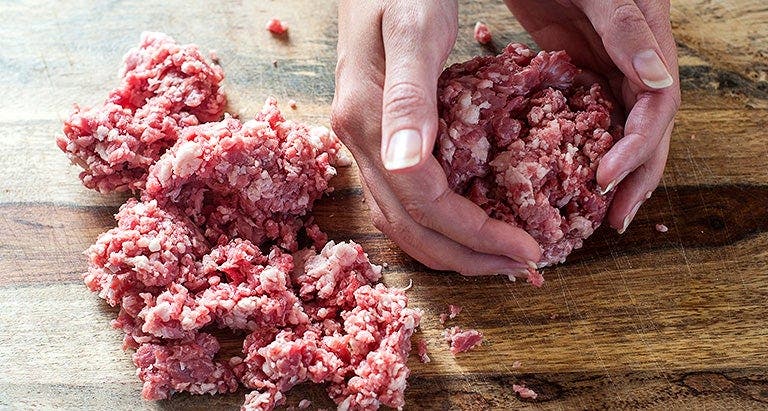Most Valuable Ingredient: Ground Beef


We’re pretty sure that if you Google “versatile,” you’ll find ground beef. That’s because out of all the meat products you can buy, few offer as many different kinds of bang for the buck.
The Score
Bewildered by ground-beef labels? Let’s decipher:
Fresh: The beef has not been frozen, and ideally it’s been ground that day. Ask the butcher to confirm.
Frozen: It’s cheaper, but riskier: Inexpensive frozen ground-beef patties have been implicated in numerous E. coli outbreaks. Some manufacturers combine low-grade scraps and slaughterhouse trimmings from multiple suppliers, which increases the likelihood of contamination.
Natural: By USDA definition, almost all beef is “natural”: There are no added ingredients, and it’s minimally processed. The term isn’t always meaningless, though; some labels offer specifics like “no antibiotics/no hormones added.”
Organic: Certified organic beef comes from animals that were never given antibiotics or hormones, and everything they ate was also certified organic.
Grass-fed: Beef that is exclusively grass-fed contains a higher proportion of healthy lipids and antioxidants than conventional beef, and it’s more environmentally friendly. But because all cattle eat grass for the first six months of their lives, some less-trustworthy manufacturers use the term. The difference comes after that, when most cows are sent to feedlots and fattened on grain. Look for symbols saying “USDA Process Verified” or “American Grassfed Association” to be sure you’re getting the real thing.
Lean/extra-lean: Usually made from sirloin, lean ground beef contains less than 10% fat, and extra-lean has less than 5%. SmartPoints® value-wise, extra-lean is the way to go, though aficionados will notice it’s less juicy than fattier options.
In Play
When buying, choose an undamaged package that feels cold; the meat should have a cherry-red outer layer. Beef is dark purplish-red when first ground, and turns bright red after a brief exposure to oxygen. (Vacuum-packed meat, which isn’t exposed at all, should be purplish-red.)
At home, refrigerate ground beef for two days max. If you’re not using it right away, transfer it to heavy-duty wrap or a zipper-lock freezer bag with as little air as possible, and freeze. It’ll stay safe to eat indefinitely in the freezer, but taste quality will decline after four months.
Keep your meat cold while defrosting: Either put it in the fridge for a day or two or in a bowl of cold water (still in its packaging) on the counter for a few hours. Change the water every 30 minutes.
Since extra-lean ground beef tends toward dryness, juice it back up by adding ingredients such as Worcestershire sauce to recipes.
To keep hamburgers, meatballs and meatloaf from becoming too dense, mix gently. The more you mash, the heavier the end result will feel.
Safe Cooking: Facts About E. Coli
Millions of pounds of ground beef have been recalled over the last few years due to E. coli contamination, and E. coli remains a concern with ground beef of any kind. The only way to kill the bacteria is to cook your beef to an internal temperature of at least 160°F. So long, medium-rare! Use a thermometer — visual cues like color can be misleading.
- When working with ground beef, be extremely careful to avoid cross-contamination.
- Wash your hands with soap and warm water before and after touching it.
- Clean anything that comes in contact with meat or your hands, including cutting boards, utensils, counters and even your sink. Use soap and hot water or a solution of one tablespoon of unscented bleach per gallon of water. Disinfect the sponge, too!
- Never reuse packaging, plates or utensils that have touched raw meat.
